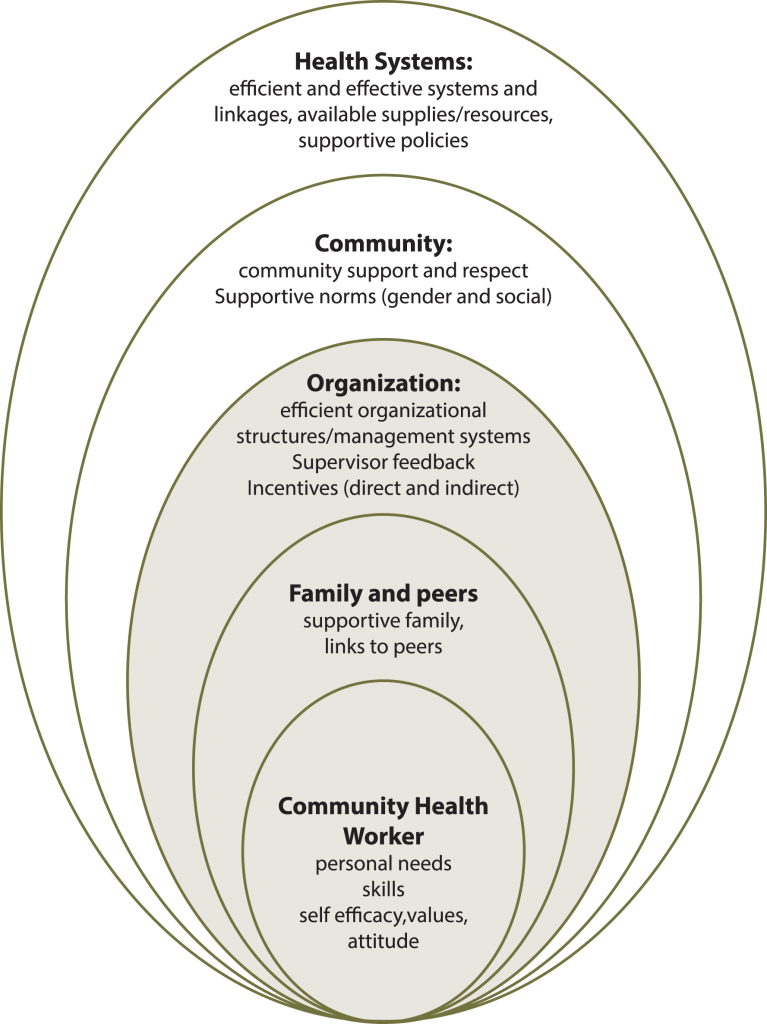Factors Influencing Providers
Provider behavior is influenced by multiple factors at multiple levels. This I-Kit organizes those factors into four categories:
Opportunity
Providers work in a supportive environment and have the necessary resources to support their performance.
Ability
Providers have the skills and knowledge necessary to do the tasks in their scope of work and feel competent in doing so.
Motivation
Providers are sufficiently rewarded and have attitudes, beliefs and norms that facilitate quality service provision.
These four factors form the framework for the I-Kit and are the basis of the Provider Assessment. The framework is informed by the Socio-Ecological Model, which shows how providers are influenced by factors at multiple levels: individual, family/peer, community, organizational, and health system.
| Level | Description | Framework Category |
| Individual | At the individual level, provider behavior is influenced by whether personal needs (e.g. compensation, recognition, work load, prestige) are met. Values, attitudes, beliefs, and perceived importance of the work also play an important role. Providers’ capacity and perception of capacity are critical influencers. | Ability, Motivation |
| Family/Peer | At the family and peer level, provider behavior is influenced by the level and type of support from family members. Providers’ relationships with peers and colleagues can also impact behavior. | Motivation |
| Community | At the community level, provider behavior is influenced by the level of respect and support received from the community. Social and gender norms – especially regarding use of services, stigma, value of life, and hierarchy – impact provider behavior. | Opportunity, Motivation |
| Organizational | At the organizational level, provider behavior is influenced by both the level of support and type of feedback from supervisors, the work environment, and the health of the organizational systems that govern the way providers function (e.g. policies for training, learning, and promotion.) | Expectation, Opportunity |
| Health System | The strength of the overall health system including the existence of policies and systems that support providers, the availability of necessary materials and supplies, and the strength of relationships between providers and supervisors impacts providers’ ability to do their job and their attitudes toward their job and clients. | Expectation, Opportunity |
The relationship between these levels and provider behavior is illustrated in the graphic below.
The Importance of Attitudes
Attitudes – both positive and negative – are typically formed by life and work experience or by deeply held beliefs and/or values. Designing an effective intervention to improve attitudes and, ultimately behavior, requires an understanding of the factors that have caused the resulting attitudes. For example, a CHW may have a negative attitude toward recommending IUDs to adolescent girls because she feels the counseling required for IUDs takes longer than other methods, she’s overburdened and doesn’t have the time (experience). On the other hand, another CHW may have negative attitudes about FP methods due to her strongly held religious beliefs that condemn premarital sex (beliefs and values).


